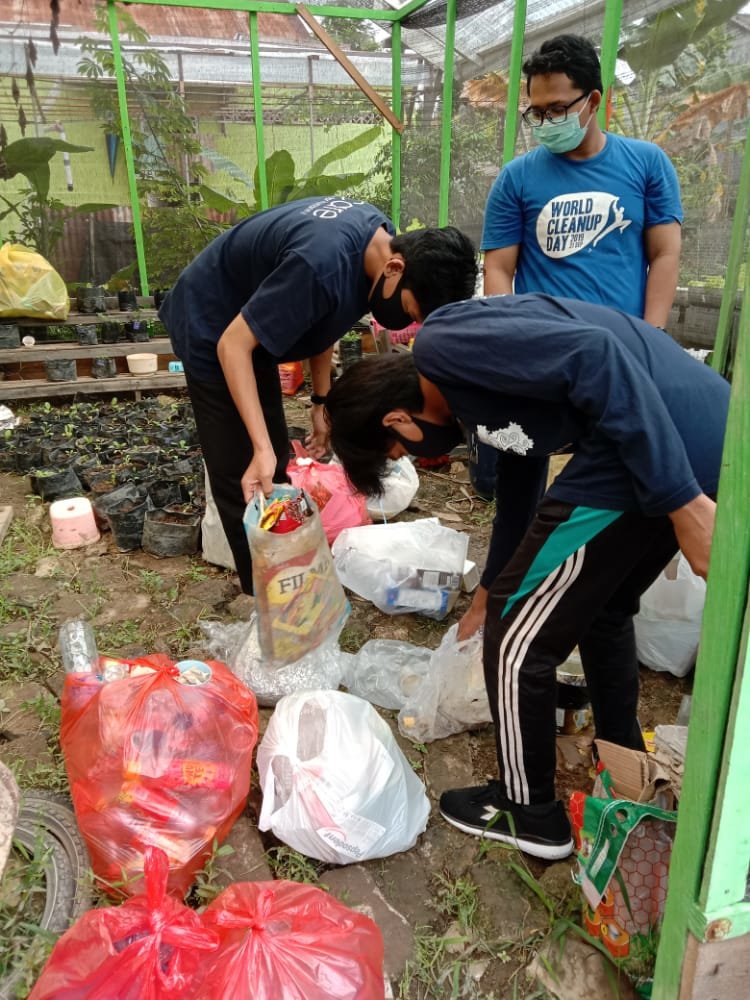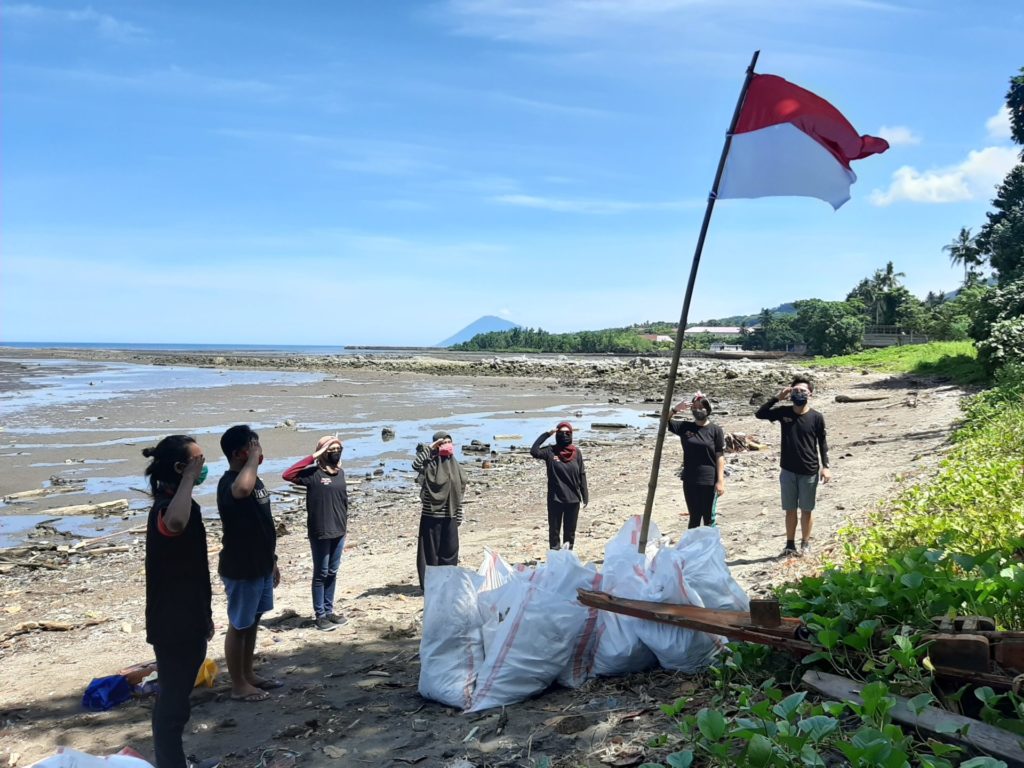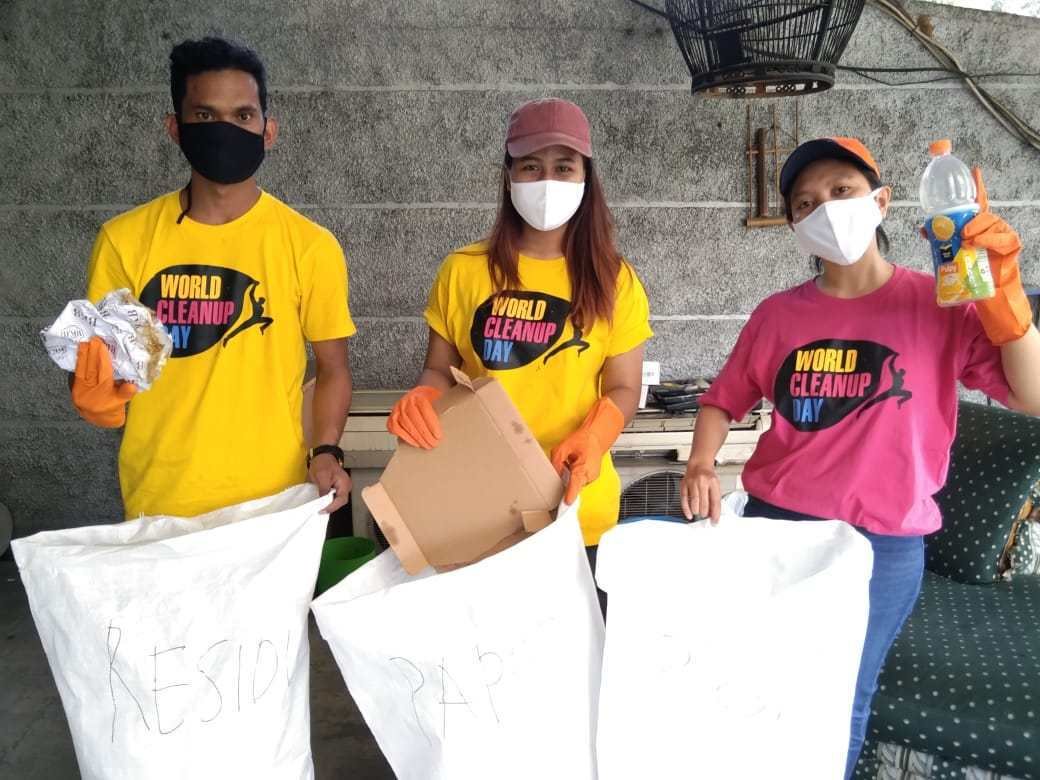Photo credits: Indonesian team World Cleanup Day
Hi, my name is Sarah Maulina and I’m an Environmental Engineering student from Bakrie University in South Jakarta and a World Cleanup Day PR & Marketing Coordinator from Indonesia.
World Cleanup Day is a global movement, involving volunteers from 180 countries around the world to come together in one day and clean up the planet.
World Cleanup Day 2020, on 19 September, proceeded in Indonesia despite the 34 provinces being impacted by COVID-19 restrictions, with cleanups in “green zone” areas (where COVID numbers were low) and waste segregation from home in “red zone” areas (where the situation with COVID-19 was more complicated). With most people staying at home for the pandemic, they consume and produce more waste than before.
In Indonesia, we define five aspects of waste management as law and regulation, institution, stakeholder participation, technical operations, and financing. Functioning like a clock – all the components need to work together. And from this years’ experience, we saw this collaboration encourages more stakeholder participation to improve Indonesia’s waste management solutions.
But all this needs an informed public. Because of the pandemic, this year we renewed focus on information about waste segregation, which I would like to share with you.
The relevance of waste segregation
There are still many people that don’t know why we must segregate our waste or even ask why there should be a different color for public trash bins. Therefore, from the World Cleanup Day campaign, we hope there will be a ripple effect that gives people more understanding of the importance of segregating waste from the source, which is their own home.
One of our stakeholders who supported and arranged World Cleanup Day Indonesia said “I never realized about waste issues or even what segregation is. Now I’m shocked about the amount of waste I generated in my home every single day!”.

Photo credits: Indonesian team World Cleanup Day
Why must we segregate our waste?
Good for the environment
Segregating waste helps reduce the amount of mixed waste that ends up in landfills and makes recycling easier.
Good for health
Segregating waste also improves public health, particularly by separating hazardous from non-hazardous waste. Segregating also protects the health of the cleaning workers who handle our waste directly.
Good for resources and materials
The segregation of wet and dry waste also helps restore material value and has an economic impact. Cleaner waste can have a higher chance of being recycled.
Because it’s fun!
By segregating, we become aware of our consumption patterns and the type of waste we produce in our homes.
Here are some easy tips when we start waste segregation at home
Step 1: Classify the category of waste
Each country has a different waste category. You can specify it based on the classification commonly used in your area and segregate your trash into categories based on the waste that you have. For example, in Indonesia/Jakarta we have many categories, but we can simplify with 4 categories such as organic, recyclable, hazardous waste, and residual waste
Step 2: Labeling
The most important thing to do waste segregation and makes you easily to sorting the waste. Without labeling, you can easily get confused
Step 3: Separate the residual waste
Residual waste is a type of waste that cannot be recycled and cannot be reused. You can separate it into labeled container residue. Collect and send it directly into the landfill.
Step 4: Cleaning before sorting
You can help the cleaning workers or waste bank operators with cleaning the waste before segregating. It makes a higher chance of your trash being recycled and makes your bin not smell much.
Step 5: Compact to collect more
To maximize the container, you can compact the waste so that the container can collect more waste, such as pressing the plastic bottle and folding the paper trash.

Photo credits: Indonesian team World Cleanup Day
As World Cleanup Day came closer, we did not expect that the enthusiasm across Indonesia would be so high despite the pandemic situation. In fact, we successively gathered 4.2 million volunteers for the cleanup and segregation, while collecting 4,000 tons of trash. What an amazing result!
There was much more unprecedented collaboration and support with and from the government, public figures, and various stakeholders than ever before. Our young provincial leaders had the power, energy, and strategy to bring their governments on board. The spirit was still going strong, even in this situation!
We all know that it is so hard to start an action. But trust me, if not us, who will?
Article by Sarah Maulina @sarmulf

